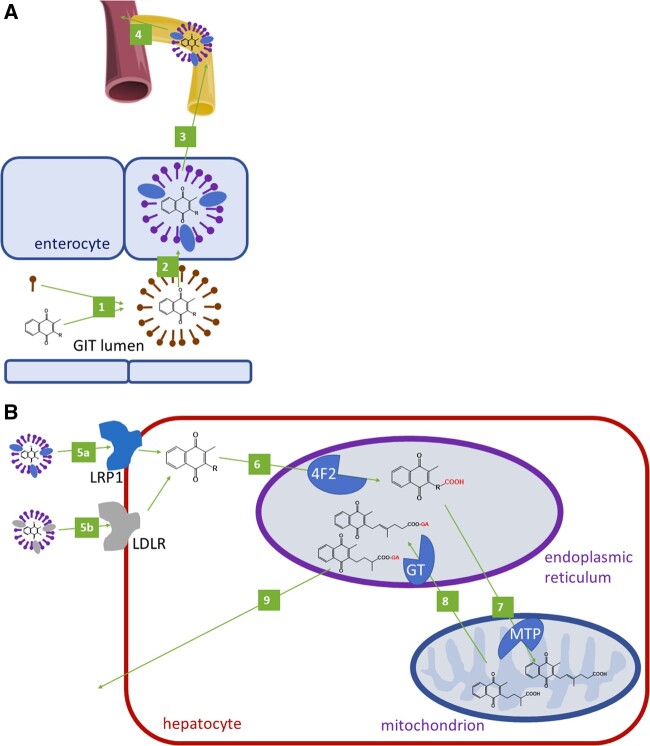Figure 1.
Absorption and elimination of vitamin K. A: Oral absorption of vitamin K. 1: Formation of micelles from vitamin K and bile acids. 2: Uptake of vitamin K from a micelle to an enterocyte. 3: Formation and release of a chylomicron containing vitamin K. 4: Through lymphatic circulation, vitamin K in the chylomicron enters systemic circulation (through the vena cava inferior). B: Metabolism of vitamin K in the hepatocyte. A chylomicron loaded with vitamin K binds to low density lipoprotein receptor-related protein 1 (LRP1, 5a) or LDL particles loaded with vitamin K bind to LDL-receptors (LDLRs, 5 b), and this results in the uptake of vitamin K into the hepatocyte. A similar process can also be observed with VLDL in the peripheral tissues (not shown). 6: Vitamin K is ω-hydroxylated by cytochrome 4F2 in the endoplasmic reticulum. 7: This metabolite is subsequently β-oxidized by mitochondrial trifunctional protein (MTP) to 5 C or 7 C or 10 C (not shown), which are subjected to glucuronidation by UDP-glucuronosyltransferase (GT, 8) in the endoplasmic reticulum. 9: Excretion of glucuronides in feces and urine

